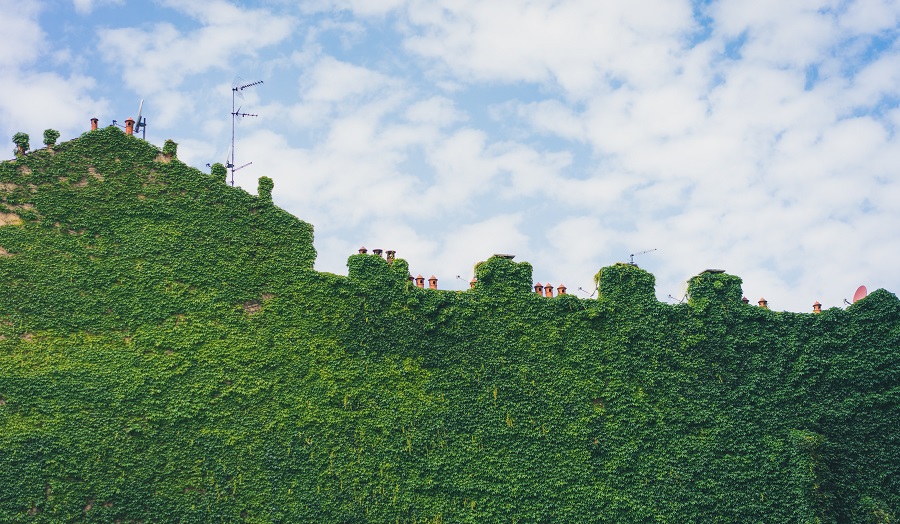Architect, designer and founder of urban rewilding campaign Rewild My Street Sian Moxon explains why green walls are one way to mitigate environmental problems and improve biodiversity.
Date: 13 August 2021
Green walls have risen in popularity in the built environment in recent years, as a way of making buildings and structures more attractive, while also providing a number of other benefits.
Green walls are vertical structures that have different types of plants or other greenery attached to them. They are a useful way to green city centres, where open space is limited and they can be retrofitted to existing buildings.
Besides, green walls mitigate environmental problems that are particular to cities, such as flooding and overheating caused by a prevalence of hard surfaces, air pollution, and poor access to nature.
Their planting helps to cool building interiors and streets through shading, insulation and evapo-transpiration. They can store stormwater, if planted in rain gardens or irrigated by rainwater harvested from roofs.
Their foliage can trap pollutants to clean the air at street level. Along with improving the appearance of building facades, this contributes to 'healthy streets' that encourage walking and cycling.
As well as improving people's health and wellbeing, green walls boost urban biodiversity, providing habitat for nesting birds and pollinators to help address the ecological crisis as well as the climate one.
There are a number of different options for green walls, requiring varying levels of effort and upkeep. Simple, inexpensive 'green facades', formed from climbing plants grown at ground level, are most versatile, requiring little maintenance. But complex 'living wall' systems can have a greater impact on commercial projects. There is also potential for 'bioactive facades', constructed of materials receptive to algae and moss growth, to transform cities in the future.
Find out about other tips to make where you live more ecologically friendly through urban rewilding campaign, Rewild My Street.

